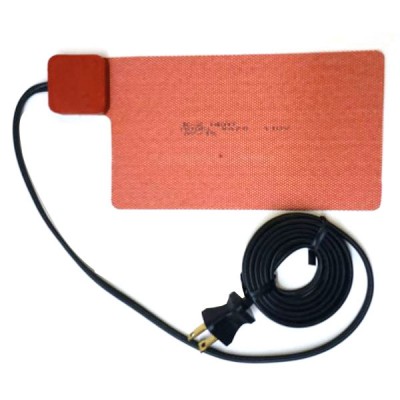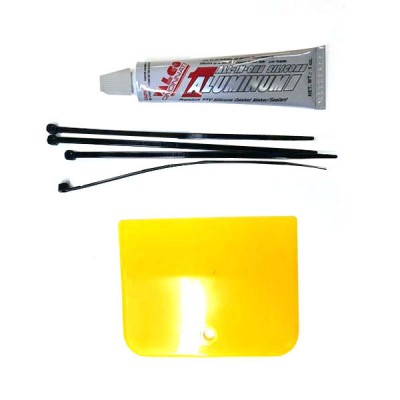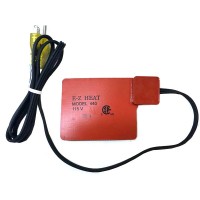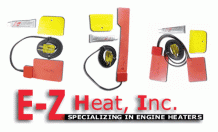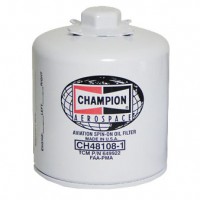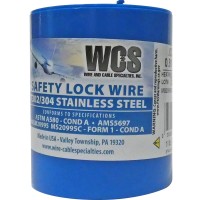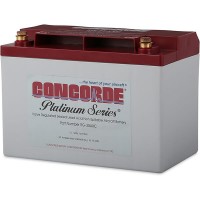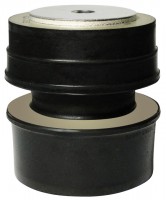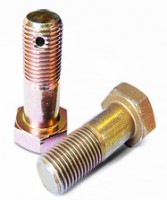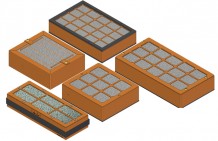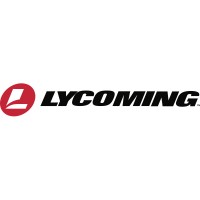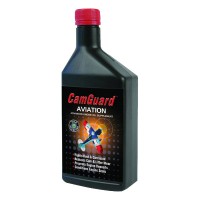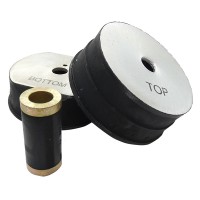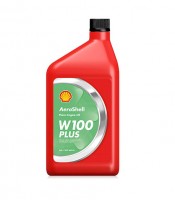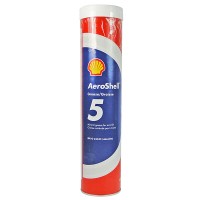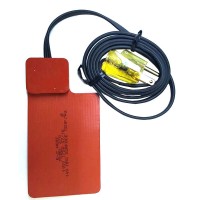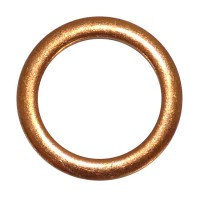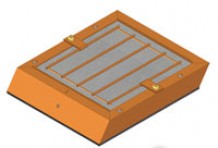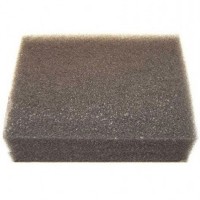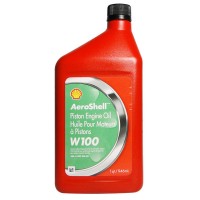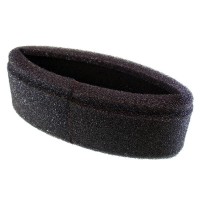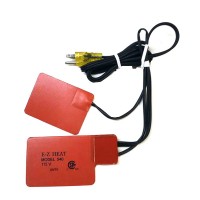Aircraft Spruce Canada
Brantford, ON Canada
Corona, CA | Peachtree City, GA
Chicago, IL | Wasilla, AK
E-Z Heat Aircraft Engine Preheater Model 470 - 120V
MFR Model# 470
Overview
|
E-Z Heat Aircraft Engine heater for the Model 470- 4" X 7" X 1/32"pad.
Note: Please see "Engine Application Guide" Click Here for the correct EZ Heat model number for your application. Preheating engines for winter operations is at best a miserable chore and at worst can be a disaster for the plane, the pilot & flight operations - until the development of the E-Z Heat Aircraft Engine Heater. The E-Z Heat was designed to provide very efficient engine heating for virtually all propeller driven aircraft. The heaters consist of a flexible synthetic pad that easily conforms to the contours of the oil pan. This pad will heat 12 qts of oil from -40° to +60°F in an hour while using approximately 300 watts of electricity. The heater is 1/32" thick. which enables the immediate heat transfer from heater to engine. The heaters are thermostatically controlled, so leaving them plugged in overnight means the plane will be ready to go in the morning. Normally, complete pre-heating takes only 3-5 hours for the entire engine to be nice and warm. With this new lighted plug (110V models only, 220V models include no plug to allow for European outlet variance), the owner simply needs to look out the window or peek in the hangar to see if they remembered to plug in their E-Z Heat engine pre-heater. Molded into the male plug end is a newly designed light emitting diode (LED). This LED allows the operator to visually recognize if there is electrical power to the preheat system even from a distance. FAA approved for certificated aircraft. End your cold weather starting problems and reduce premature engine wear. E-Z Heat Installation Instructions |
Features
Installation:The adhesive is already on the pad.
Preheat Time:
3 to 5 hours on cold soaked engine, although, since unit is thermostatically controlled, it may be left on overnight or all the time. Cowl covers and prop covers are recommended for extreme cold weather, they also reduce preheat time.
Lite Brite Plug:
With this new lighted plug, the owner simply has to look out the window or peek in the hangar to see if they remembered to plug in their E-Z Heat engine pre-heater.
Heat Transfer:
Convection/conduction, the safest way of heat transfer available. No flames or glowing elements are potential fire hazards.
Specifications
Reviews
E-Z Heat Engine Heater 470 110V/120V
E-Z Heat Engine Heater 470 110V/120V
E-Z Heat Engine Heater 470 110V/120V
Works perfectly. Install was a little messy, that was to be expected. Like the long enough cord. Very easy . Nick M.
E-Z Heat Engine Heater 470 110V/120V
nice and works good!!
E-Z Heat Engine Heater 470 110V/120V
I have installed these on 3 of my airplanes, with no issue. If the aircraft is outside, it should have an engine blanket, and with this my engine is held at 75-80 F with an outside temp of 20 F... I would definitely install these an any aircraft that I needed during cold weather conditions...
The EZ Heat pads are simple to install, easy to use, safe and cost effective. It is best to put a blanket on the cowl and cowl plugs in if it is very cold out to allow the heat to penetrate into the cylinders and deeper into the engine. I recommend using a little RTV right where the cord comes out of the pad and the engine to act as a bit of a strain relief. Lycomings, be sure to grind or sand the case smooth to ensure complete adhesion. Many TCM engines are already smooth enough for a good bond. I recommend the biggest pad that will properly fit your engine. Just follow the instructions and it should work just fine for you.
The kit was easy to install and so far, works as advertised. I installed the heater on my 1966 V35 Bonanza with the IO520 and it keeps the oil temps at 55* F with hangar temps in the 20s. I just started covering the cowling with a shipping blanket and using cowl plugs. This is keeping the whole engine at comparable temps.
Easy installation. And it will make your oil warm on cold mornings
This thing is awesome! Ready to install... followed the instructions to the letter and took our time. Works great! So nice to have a warm engine to start in the winter!
Q&A
Please note, Aircraft Spruce Canada's personnel are not certified aircraft mechanics and can only provide general support and ideas, which should not be relied upon or implemented in lieu of consulting an A&P or other qualified technician. Aircraft Spruce Canada assumes no responsibility or liability for any issue or problem which may arise from any repair, modification or other work done from this knowledge base. Any product eligibility information provided here is based on general application guides and we recommend always referring to your specific aircraft parts manual, the parts manufacturer or consulting with a qualified mechanic.
Per the vendors notes: "Plug the system in (either three to five hours ahead of time or the night before your flight.)"

 Aircraft Spruce Canada
Aircraft Spruce Canada
